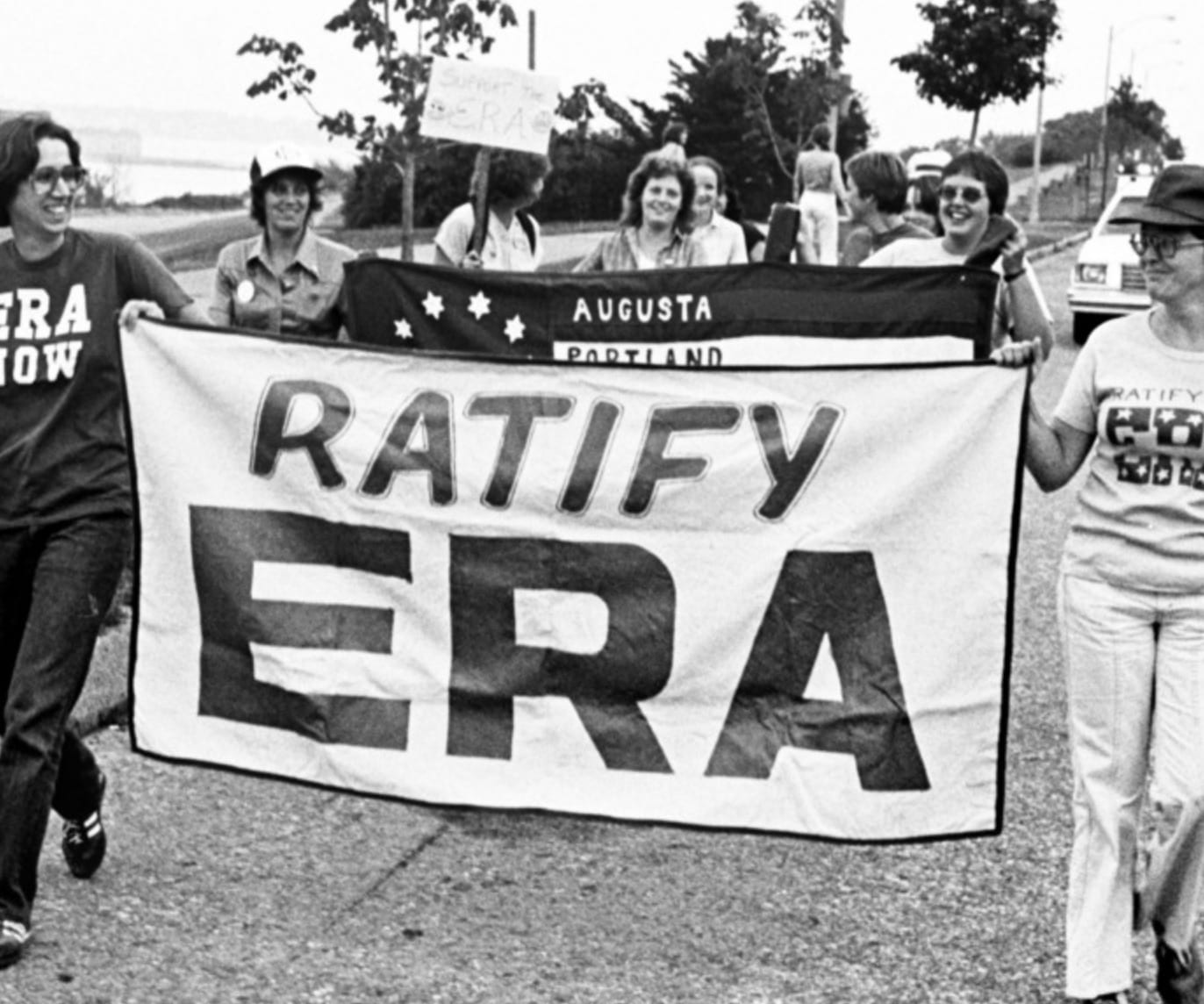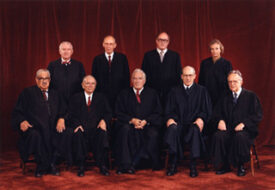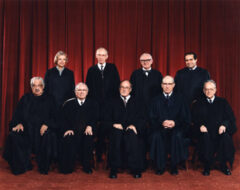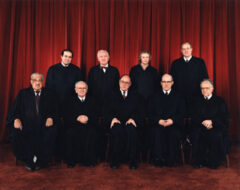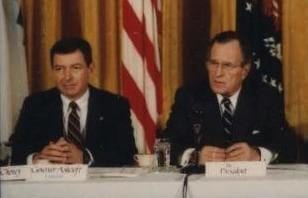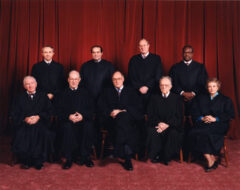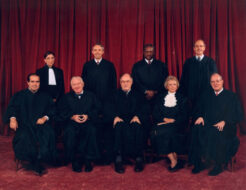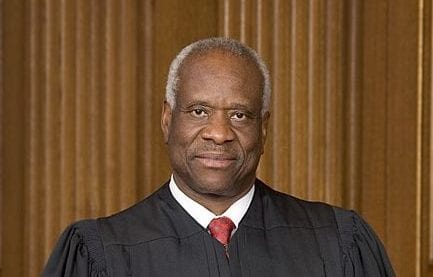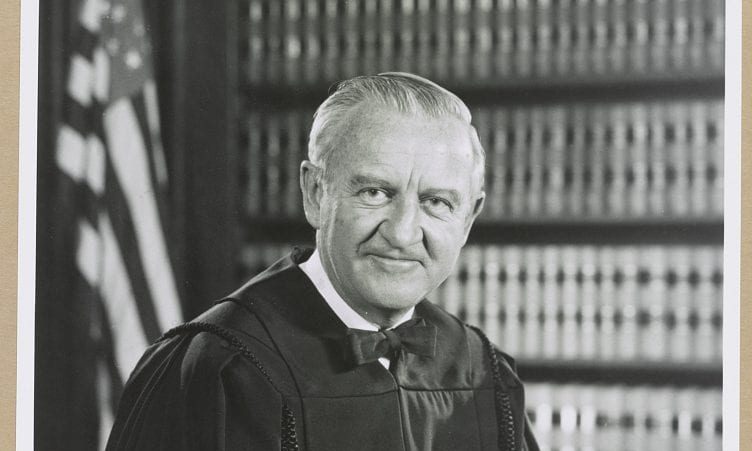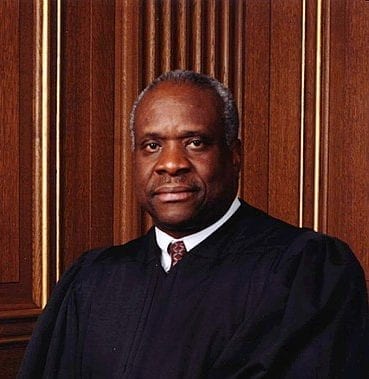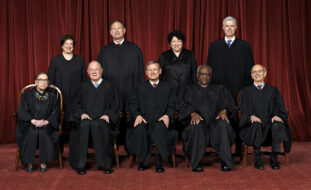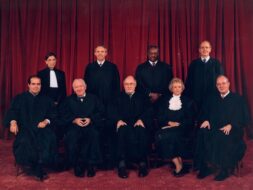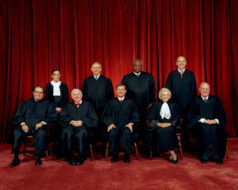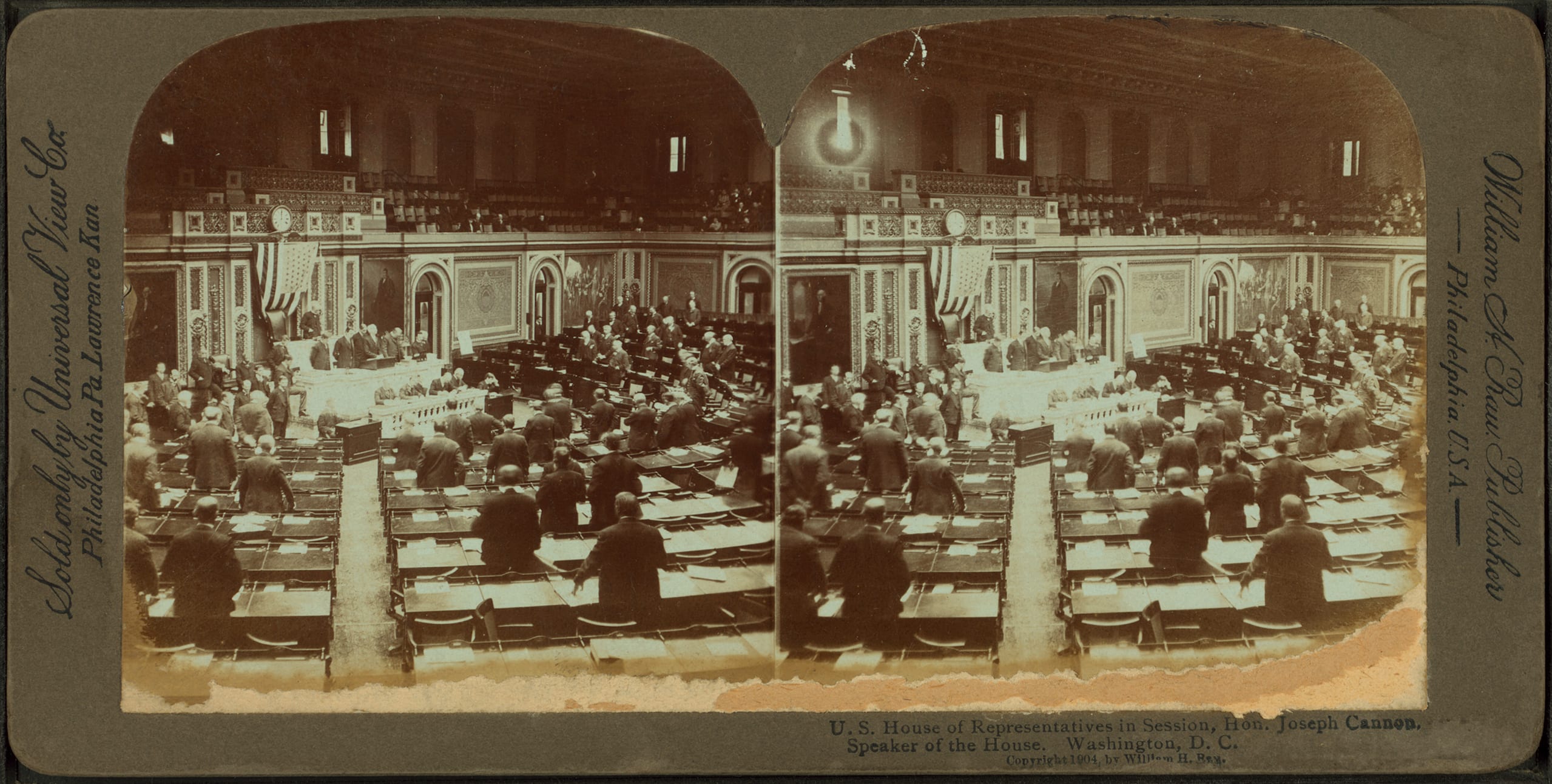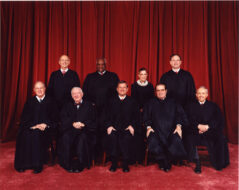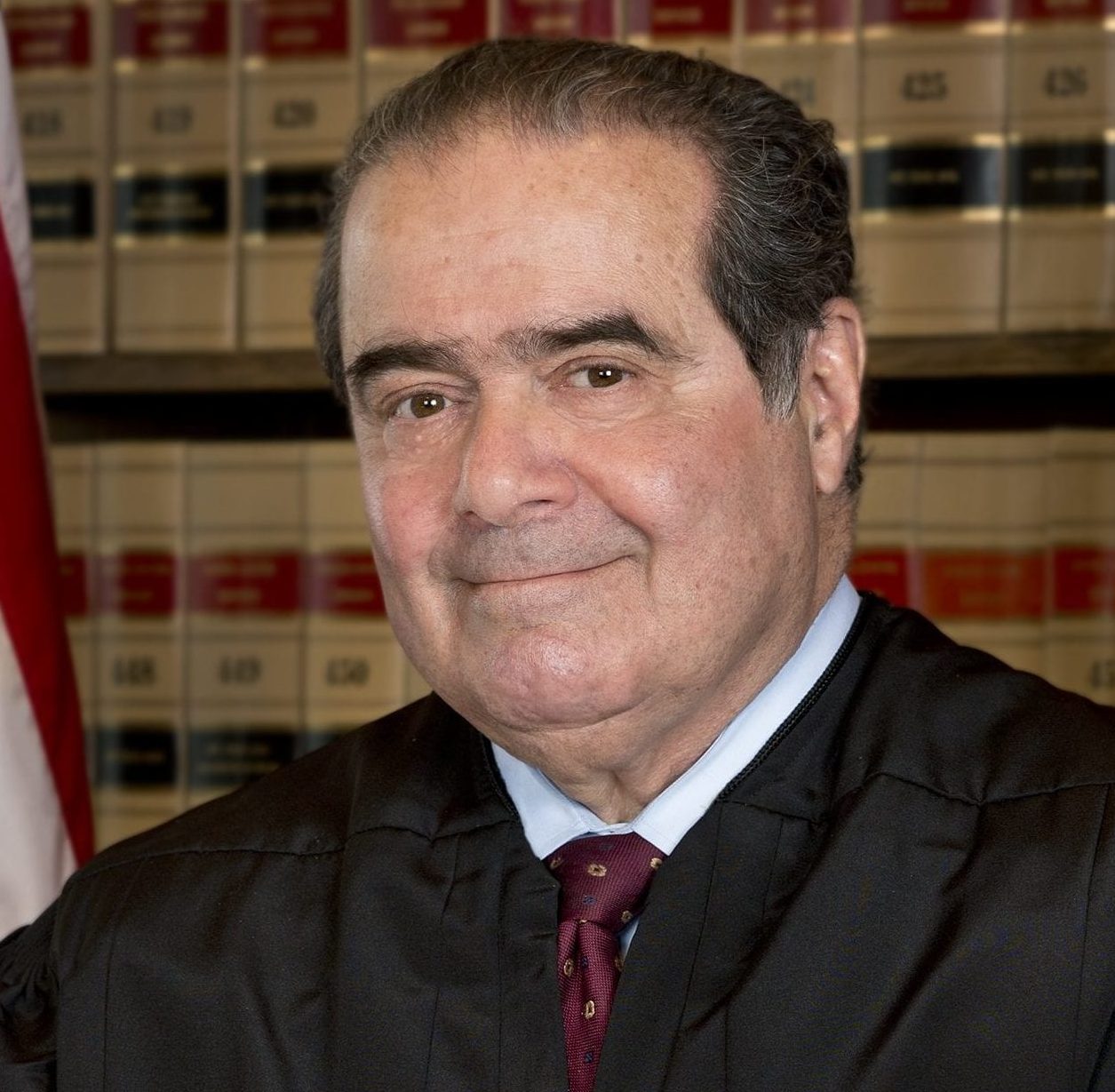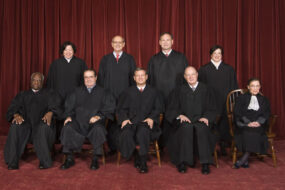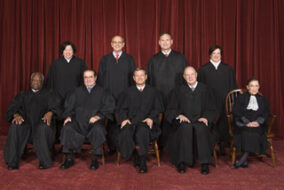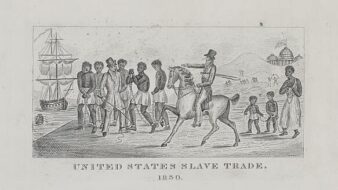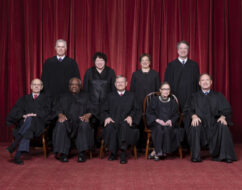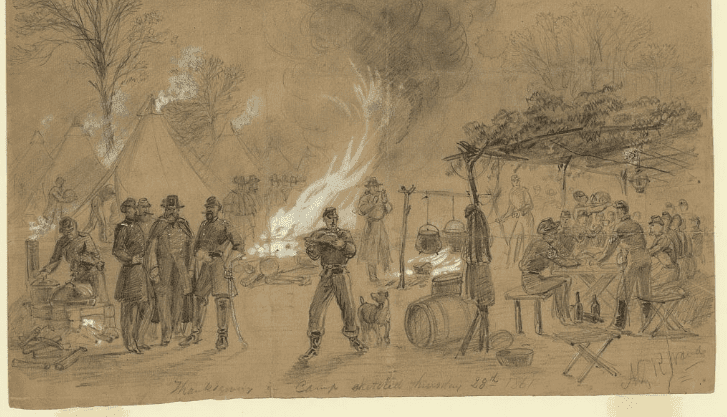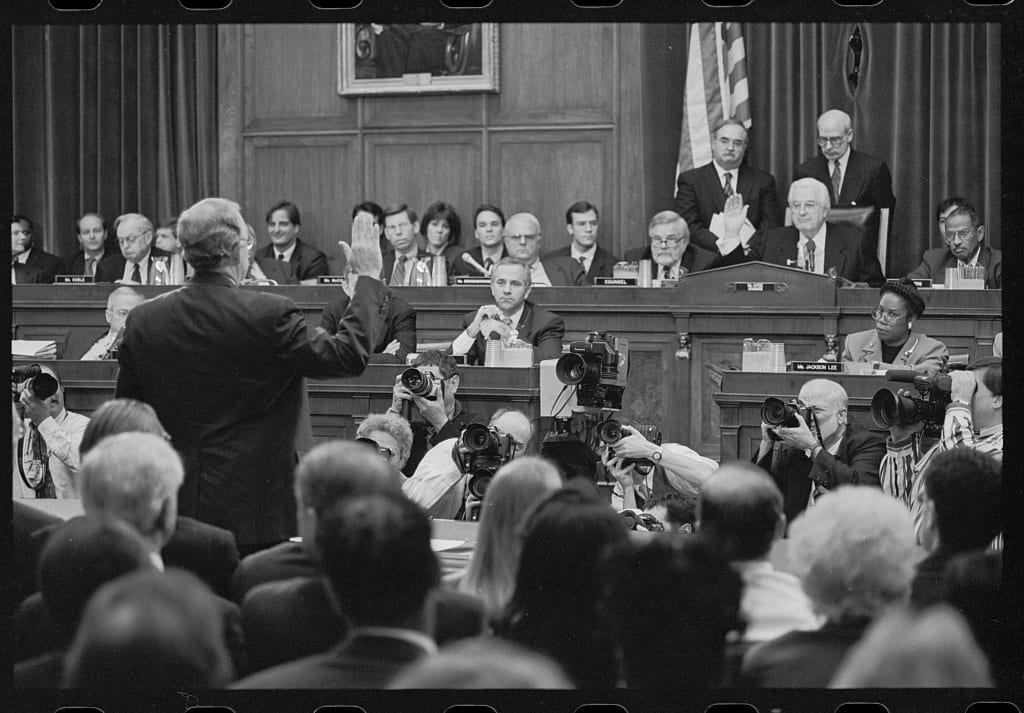
Introduction
In 2005, California enacted a law banning the sale of violent videos to minors. This law was intended to help parents protect their children from harmful effects of exposure to violent, cruel, and gory images, some including torture. The Entertainment Merchants Association, a coalition representing the interests of the home gaming industry, sued on the grounds that the California law infringed upon its First Amendment right to free speech. Writing for a 7–2 majority, Justice Antonin Scalia’s (1936–2016) opinion affirmed that video games qualify for First Amendment protection. The California law, Scalia argued, would seriously erode the First Amendment by establishing an entirely new category of banned speech for minors despite a long tradition of violent childhood entertainment. Moreover, Scalia argued that studies did not prove a direct link between viewing violent videos and violent behavior. Excerpts from the dissenters’ opinions, which disputed aspects of Justice Scalia’s analysis, including his interpretation of the scientific data, are included as well.
Source: 564 U.S. 786, https://www.law.cornell.edu/supct/html/08-1448.ZS.html.
JUSTICE SCALIA delivered the opinion of the Court.
We consider whether a California law imposing restrictions on violent video games comports with the First Amendment.
California Assembly Bill 1179 (2005) prohibits the sale or rental of “violent video games” to minors, and requires their packaging to be labeled “18.” The act covers games “in which the range of options available to a player includes killing, maiming, dismembering, or sexually assaulting an image of a human being, if those acts are depicted” in a manner that “a reasonable person, considering the game as a whole, would find appeals to a deviant or morbid interest of minors,” that is “patently offensive to prevailing standards in the community as to what is suitable for minors,” and that “causes the game, as a whole, to lack serious literary, artistic, political, or scientific value for minors.” Violation of the act is punishable by a civil fine of up to $1,000.
Respondents,[1] representing the video game and software industries, brought a preenforcement challenge to the act in the United States District Court for the Northern District of California. That court concluded that the act violated the First Amendment and permanently enjoined its enforcement.
California correctly acknowledges that video games qualify for First Amendment protection. The free speech clause exists principally to protect discourse on public matters, but we have long recognized that it is difficult to distinguish politics from entertainment, and dangerous to try. . . . Like the protected books, plays, and movies that preceded them, video games communicate ideas—and even social messages—through many familiar literary devices (such as characters, dialogue, plot, and music) and through features distinctive to the medium (such as the player’s interaction with the virtual world). That suffices to confer First Amendment protection. . . . And whatever the challenges of applying the Constitution to ever-advancing technology, “the basic principles of freedom of speech and the press, like the First Amendment’s command, do not vary” when a new and different medium for communication appears (Joseph Burstyn, Inc. v. Wilson, 1952).
The most basic of those principles is this: “As a general matter, . . . government has no power to restrict expression because of its message, its ideas, its subject matter, or its content” (Ashcroft v. American Civil Liberties Union, 2002). There are of course exceptions. . . . These limited areas—such as obscenity (Roth v. United States, 1957), incitement (Brandenburg v. Ohio (1969),[2] and fighting words (Chaplinsky v. New Hampshire, 1942)[3] —represent “well-defined and narrowly limited classes of speech, the prevention and punishment of which have never been thought to raise any constitutional problem.”
Last Term, in Stevens, we held that new categories of unprotected speech may not be added to the list by a legislature that concludes certain speech is too harmful to be tolerated. Stevens concerned a federal statute purporting to criminalize the creation, sale, or possession of certain depictions of animal cruelty. . . . A saving clause largely borrowed from our obscenity jurisprudence (see Miller v. California, 1973),[4] exempted depictions with “serious religious, political, scientific, educational, journalistic, historical, or artistic value. We held that statute to be an impermissible content-based restriction on speech. There was no American tradition of forbidding the depiction of animal cruelty—though states have long had laws against committing it. . . .
That holding controls this case. As in Stevens, California has tried to make violent-speech regulation look like obscenity regulation by appending a saving clause required for the latter. That does not suffice. Our cases have been clear that the obscenity exception to the First Amendment does not cover whatever a legislature finds shocking, but only depictions of “sexual conduct” (Miller). See also Cohen v. California (1971). . . .
Because speech about violence is not obscene, it is of no consequence that California’s statute mimics the New York statute regulating obscenity for minors that we upheld in Ginsberg v. New York (1968). That case approved a prohibition on the sale to minors of sexual material that would be obscene from the perspective of a child. . . . And because “obscenity is not protected expression,” the New York statute could be sustained so long as the legislature’s judgment that the proscribed materials were harmful to children “was not irrational.”. . .
. . . No doubt a state possesses legitimate power to protect children from harm (Ginsberg; Prince v. Massachusetts, 1944), but that does not include a free-floating power to restrict the ideas to which children may be exposed. . . .
California’s argument would fare better if there were a long-standing tradition in this country of specially restricting children’s access to depictions of violence, but there is none. Certainly the books we give children to read—or read to them when they are younger—contain no shortage of gore. [Justice Scalia here provides various examples of violent children’s literature and recounts some efforts to repress it.] . . .
California claims that video games present special problems because they are “interactive,” in that the player participates in the violent action onscreen and determines its outcome. The latter feature is nothing new: Since at least the publication of The Adventures of You: Sugarcane Island in 1969, young readers of choose-your-own-adventure stories have been able to make decisions that determine the plot by following instructions about which page to turn to. As for the argument that video games enable participation in the violent action, that seems to us more a matter of degree than of kind. As Judge Posner has observed, all literature is interactive. “[T]he better it is, the more interactive. Literature when it is successful draws the reader into the story, makes him identify with the characters, invites him to judge them and quarrel with them, to experience their joys and sufferings as the reader’s own” (American Amusement Machine Association v. Kendrick, 2001).
Justice Alito has done considerable independent research to identify video games in which “the violence is astounding.”. . . Justice Alito recounts all these disgusting video games in order to disgust us—but disgust is not a valid basis for restricting expression. And the same is true of Justice Alito’s description of those video games he has discovered that have a racial or ethnic motive for their violence. . . . To what end does he relate this? Does it somehow increase the “aggressiveness” that California wishes to suppress? Who knows? But it does arouse the reader’s ire, and the reader’s desire to put an end to this horrible message. Thus, ironically, Justice Alito’s argument highlights the precise danger posed by the California act: that the ideas expressed by speech—whether it be violence, or gore, or racism—and not its objective effects, may be the real reason for governmental proscription.
Because the act imposes a restriction on the content of protected speech, it is invalid unless California can demonstrate that it passes strict scrutiny—that is, unless it is justified by a compelling government interest and is narrowly drawn to serve that interest (R.A.V.). The state must specifically identify an “actual problem” in need of solving and the curtailment of free speech must be actually necessary to the solution, see R.A.V. That is a demanding standard. . . .
The state’s evidence is not compelling. California relies primarily on the research of Dr. Craig Anderson and a few other research psychologists whose studies purport to show a connection between exposure to violent video games and harmful effects on children. These studies have been rejected by every court to consider them, and with good reason: They do not prove that violent video games cause minors to act aggressively (which would at least be a beginning). Instead, “nearly all of the research is based on correlation, not evidence of causation, and most of the studies suffer from significant, admitted flaws in methodology” (Video Dealers Software Association). They show at best some correlation between exposure to violent entertainment and minuscule real-world effects, such as children’s feeling more aggressive or making louder noises in the few minutes after playing a violent game than after playing a nonviolent game.
Even taking for granted Dr. Anderson’s conclusions that violent video games produce some effect on children’s feelings of aggression, those effects are both small and indistinguishable from effects produced by other media. In his testimony in a similar lawsuit, Dr. Anderson admitted that the “effect sizes” of children’s exposure to violent video games are “about the same” as that produced by their exposure to violence on television. And he admits that the same effects have been found when children watch cartoons starring Bugs Bunny or the Road Runner, or when they play video games like Sonic the Hedgehog that are rated “E” (appropriate for all ages), or even when they “vie[w] a picture of a gun.”
Of course, California has (wisely) declined to restrict Saturday morning cartoons, the sale of games rated for young children, or the distribution of pictures of guns. The consequence is that its regulation is wildly underinclusive when judged against its asserted justification, which in our view is alone enough to defeat it. Underinclusiveness raises serious doubts about whether the government is in fact pursuing the interest it invokes, rather than disfavoring a particular speaker or viewpoint. Here, California has singled out the purveyors of video games for disfavored treatment—at least when compared to booksellers, cartoonists, and movie producers—and has given no persuasive reason why. . . .
And finally, the act’s purported aid to parental authority is vastly overinclusive. Not all of the children who are forbidden to purchase violent video games on their own have parents who care whether they purchase violent video games. While some of the legislation’s effect may indeed be in support of what some parents of the restricted children actually want, its entire effect is only in support of what the state thinks parents ought to want. This is not the narrow tailoring to “assisting parents” that restriction of First Amendment rights requires.
California’s effort to regulate violent video games is the latest episode in a long series of failed attempts to censor violent entertainment for minors. While we have pointed out above that some of the evidence brought forward to support the harmfulness of video games is unpersuasive, we do not mean to demean or disparage the concerns that underlie the attempt to regulate them—concerns that may and doubtless do prompt a good deal of parental oversight. We have no business passing judgment on the view of the California legislature that violent video games (or, for that matter, any other forms of speech) corrupt the young or harm their moral development. Our task is only to say whether or not such works constitute a “well-defined and narrowly limited clas[s] of speech, the prevention and punishment of which have never been thought to raise any constitutional problem” (Chaplinsky) (the answer plainly is no); and if not, whether the regulation of such works is justified by that high degree of necessity we have described as a compelling state interest (it is not). Even where the protection of children is the object, the constitutional limits on governmental action apply.
California’s legislation straddles the fence between (1) addressing a serious social problem and (2) helping concerned parents control their children. Both ends are legitimate, but when they affect First Amendment rights they must be pursued by means that are neither seriously underinclusive nor seriously overinclusive. See Church of Lukumi Babalu Aye, Inc. v. Hialeah (1993). As a means of protecting children from portrayals of violence, the legislation is seriously underinclusive, not only because it excludes portrayals other than video games, but also because it permits a parental or avuncular veto. And as a means of assisting concerned parents it is seriously overinclusive because it abridges the First Amendment rights of young people whose parents (and aunts and uncles) think violent video games are a harmless pastime. And the overbreadth in achieving one goal is not cured by the underbreadth in achieving the other. Legislation such as this, which is neither fish nor fowl, cannot survive strict scrutiny.
We affirm the judgment below.[5]
It is so ordered.
JUSTICE ALITO, with whom THE CHIEF JUSTICE joins, concurring in the judgment.
The California statute that is before us in this case represents a pioneering effort to address what the state legislature and others regard as a potentially serious social problem: the effect of exceptionally violent video games on impressionable minors, who often spend countless hours immersed in the alternative worlds that these games create. Although the California statute is well intentioned, its terms are not framed with the precision that the Constitution demands, and I therefore agree with the Court that this particular law cannot be sustained.
I disagree, however, with the approach taken in the Court’s opinion. In considering the application of unchanging constitutional principles to new and rapidly evolving technology, this Court should proceed with caution. We should make every effort to understand the new technology. We should take into account the possibility that developing technology may have important societal implications that will become apparent only with time. We should not jump to the conclusion that new technology is fundamentally the same as some older thing with which we are familiar. And we should not hastily dismiss the judgment of legislators, who may be in a better position than we are to assess the implications of new technology. The opinion of the Court exhibits none of this caution.
In the view of the Court, all those concerned about the effects of violent video games—federal and state legislators, educators, social scientists, and parents—are unduly fearful, for violent video games really present no serious problem. Spending hour upon hour controlling the actions of a character who guns down scores of innocent victims is not different in “kind” from reading a description of violence in a work of literature.
The Court is sure of this; I am not. There are reasons to suspect that the experience of playing violent video games just might be very different from reading a book, listening to the radio, or watching a movie or a television show.
JUSTICE BREYER, dissenting . . .
California’s law imposes no more than a modest restriction on expression. The statute prevents no one from playing a video game, it prevents no adult from buying a video game, and it prevents no child or adolescent from obtaining a game provided a parent is willing to help. All it prevents is a child or adolescent from buying, without a parent’s assistance, a gruesomely violent video game of a kind that the industry itself tells us it wants to keep out of the hands of those under the age of seventeen.
Nor is the statute, if upheld, likely to create a precedent that would adversely affect other media, say films, or videos, or books. A typical video game involves a significant amount of physical activity. And pushing buttons that achieve an interactive, virtual form of target practice (using images of human beings as targets), while containing an expressive component, is not just like watching a typical movie.
The interest that California advances in support of the statute is compelling. As this Court has previously described that interest, it consists of both (1) the “basic” parental claim “to authority in their own household to direct the rearing of their children,” which makes it proper to enact “laws designed to aid discharge of [parental] responsibility,” and (2) the state’s “independent interest in the well-being of its youth” (Ginsberg). And where these interests work in tandem, it is not fatally “underinclusive” for a state to advance its interests in protecting children against the special harms present in an interactive video game medium through a default rule that still allows parents to provide their children with what their parents wish. . . .
There are many scientific studies that support California’s views. Social scientists, for example, have found causal evidence that playing these games results in harm. Longitudinal studies, which measure changes over time, have found that increased exposure to violent video games causes an increase in aggression over the same period. . . .
[Here JUSTICE BREYER cites some of these studies.]
Experts debate the conclusions of all these studies. Like many, perhaps most, studies of human behavior, each study has its critics, and some of those critics have produced studies of their own in which they reach different conclusions. (I list both sets of research in the appendices.) I, like most judges, lack the social science expertise to say definitively who is right. But associations of public health professionals who do possess that expertise have reviewed many of these studies and found a significant risk that violent video games, when compared with more passive media, are particularly likely to cause children harm. . . .
Unlike the majority, I would find sufficient grounds in these studies and expert opinions for this Court to defer to an elected legislature’s conclusion that the video games in question are particularly likely to harm children. This Court has always thought it owed an elected legislature some degree of deference in respect to legislative facts of this kind, particularly when they involve technical matters that are beyond our competence, and even in First Amendment cases. The majority, in reaching its own, opposite conclusion about the validity of the relevant studies, grants the legislature no deference at all.
JUSTICE THOMAS, dissenting.
The Court’s decision today does not comport with the original public understanding of the First Amendment. The majority strikes down, as facially unconstitutional,[6] a state law that prohibits the direct sale or rental of certain video games to minors because the law “abridg[es] the freedom of speech.” But I do not think the First Amendment stretches that far. The practices and beliefs of the founding generation establish that “the freedom of speech,” as originally understood, does not include a right to speak to minors (or a right of minors to access speech) without going through the minors’ parents or guardians. I would hold that the law at issue is not facially unconstitutional under the First Amendment, and reverse and remand for further proceedings.
Remarks on the Economy (2012)
December 6, 2012
Conversation-based seminars for collegial PD, one-day and multi-day seminars, graduate credit seminars (MA degree), online and in-person.

